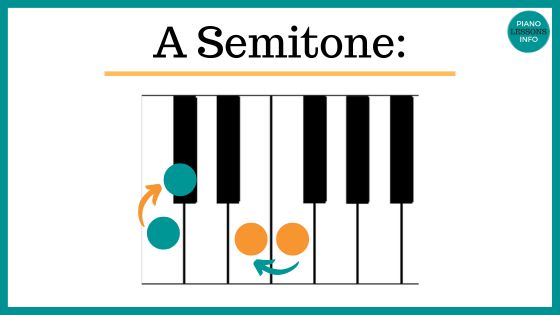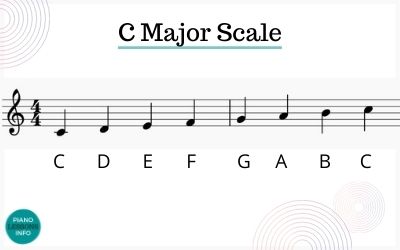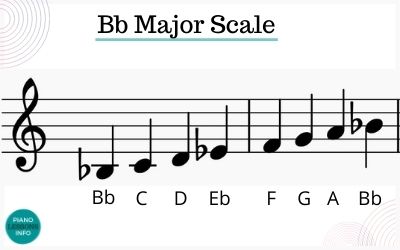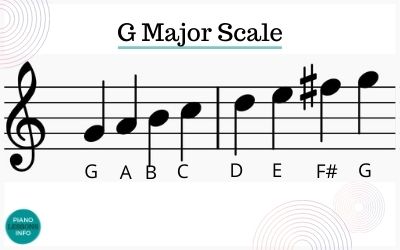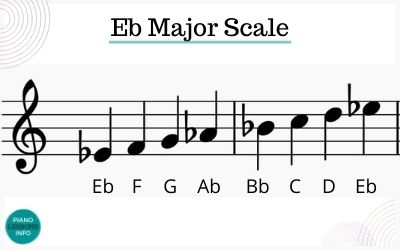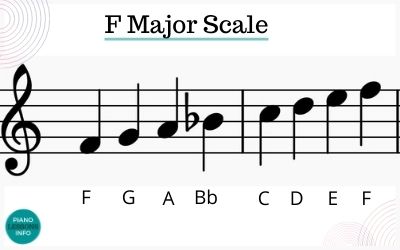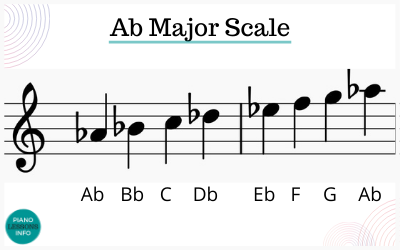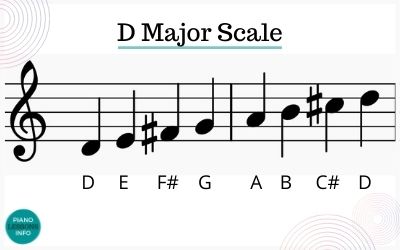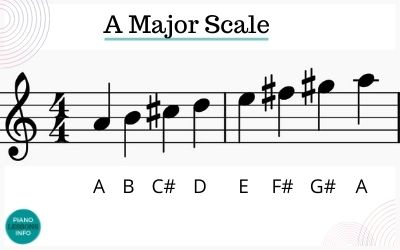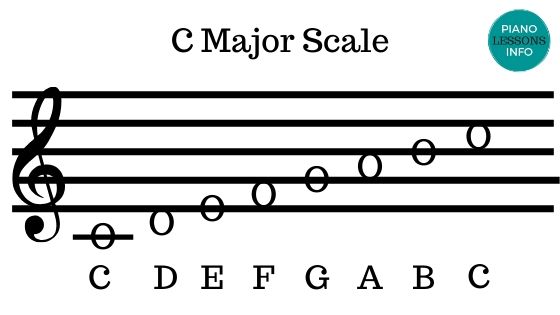A List of Musical Scales
Here you'll find a list of musical scales. This page focuses on the ones that you will most often come across - especially if you're a piano player. This list focuses on the more traditional scales - major and minor. Also included on this page is the chromatic scale.

This list of musical scales has 2 main categories:
1) The Major Scale
2) The Minor Scales - of which there are 3.
On this page I'll be explaining the scales in terms of the space between notes - whole-tones and semi-tones.
Whole Tones & Semi Tones
A whole-tone (WT) is 2 semi-tones.
On the piano it's like skipping a black note when going to the next white note.
A semi-tone (ST) is the very next note, either up or down.
On the piano this usually means going from a white key to the very next black key - like a sharp of a flat. For example, a whole-tone from C is D or Bb. A semi-tone from C is C# or B.
The Major Scale
The major scale is the most common of all scales. The key signatures are based on major keys and major scales. The scale is basically a collection of tones you play in order for it to sound the same way every time.
Here are the whole-tones (WT) and semi-tones (ST) that make up the major scale:
Root – WT – WT – ST – WT – WT – WT –ST (Root)
Here's an example:
Root - C – WT - D – WT - E – ST - F – WT - G – WT - A – WT - B –ST - C - (Root)
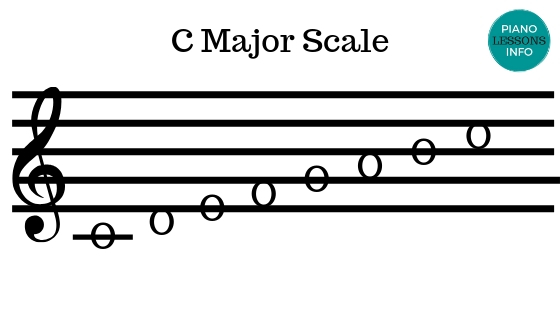
Minor Scales
n our list of musical scales, we have 3 types of minor scales:
1) The Natural Minor Scale
2) The Harmonic Minor Scale
3) The Melodic Minor Scale.
They each have something slightly different.
To see all the minor scales, click here.
Natural Minor Scale
The natural minor scale is a played according to it's key signature. You don't change the notes at all. This is why it's called the natural minor scale. The pattern of whole-tones (WT) and semi-tones (ST) goes like this:
Root - WT - ST - WT - WT - ST - WT - WT (Root)
For example in A natural minor scale we have: Root - A - WT - B - ST - C - WT - D - WT - E - ST - F - WT - G - WT - A (Root)
(A Natural Minor Scale)
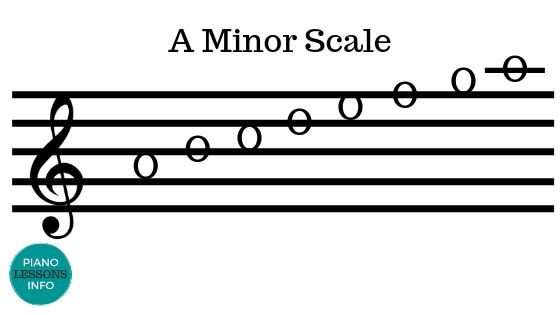
Harmonic Minor Scale
The next in our list of musical scales is the harmonic minor scale. It is almost the same as the natural minor only with one difference. It includes an accidental on the 7th note.
The accidental in the harmonic minor scale is a sharp. You must make the 7th note higher by one semi-tone.
So for example, instead of G, you make the note G#. You play the 7th note raised when you are going up the scale (ascending) and when you are going down (descending).
The pattern of whole-tones and semi-tones goes like this:
Root - WT - ST - WT - WT - ST - 3ST - ST (Root)
For example in A natural minor scale we have:
Root - A - WT - B - ST - C - WT - D - WT - E - ST - F - 3ST - G# - ST - A (Root)
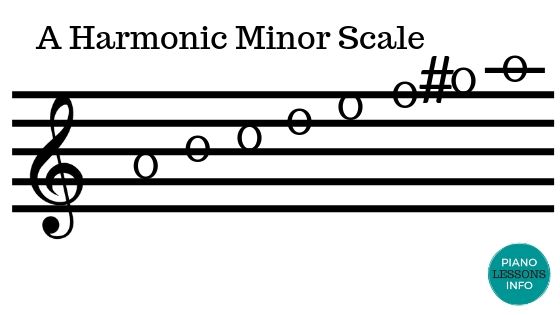
Melodic Minor Scale
The last of the minor scales in our list of musical scales is the melodic minor scale. It's the most complicated of all the minor scales. There are accidentals and they change going up and going down.
When going up (ascending) in the melodic minor scale, you must raise the 6th and 7th notes. You need to make them sharp.
When going down (descending), you lower the 6th and 7th notes so that it's the same as the natural minor scale.
So for example, in A Melodic Minor Scale, you change F to F# and G to G# going up. Then when you go down, you change them back to F and G.
Here's the pattern of whole-tones and semi-tones:
Going up: Root - WT - ST - WT - WT - WT - WT - ST (Root)
Going down: (Top root) - WT - WT - ST - WT - WT - ST - WT (Root)
Here's an example using A Melodic Minor Scale:
Going up: Root - A - WT - B - ST - C - WT - D - WT - E - WT - F# - WT - G# - ST - A (Root)
Going down: (Top root) - A - WT - G - WT - F - ST - E - WT - D - WT - C - ST- B - WT - A (Root)

The Pentatonic Scale
The pentatonic scale is one made up of 5 notes. The 1st, 2nd, 3rd, 5th, and 6th notes of the major scale. It's often used for improvising.
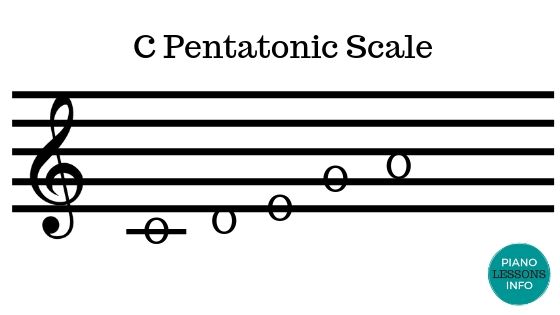
Chromatic Scale
Finally, in our list of musical scales we have the chromatic scale.
In the chromatic scale, you play every note going up and going down. The only thing you need to do is start and end on the same note. Frankly, that's all there is to it. Play every note.
That covers our list of musical scales. If you're a piano player, check out the piano music scales page for a list of the major scales and fingering. If you'd like to also learn about the scale modes, click here. Happy playing!
Free Download:
Ultimate Chord Cheat Sheet

Subscribe below and get free access to the (printable) Ultimate Chord Cheat Sheet.
Recent Articles
-
Piano Notes Chart
Nov 20, 23 10:21 PM
Find a piano notes chart for treble clef and bass clef notes as well as the different types of notes. -
D Chord on Piano + Diagram, How To & Theory
Oct 24, 23 12:20 AM
Learn how to play the D chord on piano with diagram, fingering, D/A, D/F# and a theory explainer. -
Diminished Piano Chords: Chart & How to Make Them
Oct 09, 23 09:23 PM
Learn the different diminished piano chords and how to make them. Here you'll find both a diminished chord chart and an explanation.
Free Download:
Ultimate Chord Cheat Sheet

Subscribe below and get free access to the (printable) Ultimate Chord Cheat Sheet.





